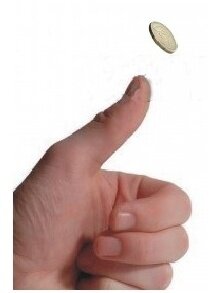Not long ago I believed sustainable business, renewable energy and the socially responsible consumer were on the verge of going mainstream. I know they will get there eventually, but that day now seems farther away.
Those of us impatient for change — in our organizations, among our customers, within society — would do well to sit with this fact: People are more motivated to avoid losses than to achieve gains. How much more? About twice as motivated.
This is just one of many thought-provoking research findings explained by preeminent psychologist Daniel Kahneman in his latest book, “Thinking, Fast and Slow.”
This is my second post exploring what some of Kahneman’s findings could hold for brands and the organizations and leaders managing them. Earlier I looked at the distinction between plausibility and probability in the brand stories we tell. Here I’m interested in what humans’ deep-seated aversion to loss means for purveyors of change.
Fear of loss vs. desire for gain![putter]()
Helping organizations and their leaders inspire change is at the heart of much of my work. Goes with the territory of working with nonprofits and businesses that are unsatisfied with the social, environmental or economic norm. For them, change rarely comes fast enough.
Most of us learn early on that people resist change. But as Kahneman has helped me understand, it’s not just any change. It’s change framed or experienced as loss.
When directly compared or weighted against each other, losses loom larger than gains. This asymmetry between the power of positive and negative expectations or experiences has an evolutionary history. Organisms that treat threats as more urgent have a better chance to survive and reproduce.
In other words, human nature can easily foil the best laid plans of organizations, leaders or brands seeking behavioral change. Protectors of the status quo have a built-in advantage.
Loss aversion is a powerful conservative force that favors minimal changes from the status quo in the lives of both institutions and individuals. This conservatism helps keep us stable in our neighborhood, our marriage, and our job.
Heads I lose, tails I lose
To use one of Kahneman’s examples, let’s say you’re offered a gamble with a flip of a coin. Tails, you lose $100. Heads, you win $150. If you’re like most people, you would reject the gamble because, as Kahneman says, “the fear of losing $100 is more intense than the hope of gaining $150.”
 Across this experiment and others, the “loss aversion ratio” tends to fall within a range of 1.5 to 2.5. So while some people might take the bet at $150, most would insist on gaining at least $200 or $250 if the coin turns up heads.
Across this experiment and others, the “loss aversion ratio” tends to fall within a range of 1.5 to 2.5. So while some people might take the bet at $150, most would insist on gaining at least $200 or $250 if the coin turns up heads.
Kahneman has observed loss aversion elsewhere:
- the aversion to the failure of not reaching a goal is much stronger than the desire to exceed it
- a golfer’s aversion to making a bogey is greater than the desire for birdie (and therefore golfers have greater success avoiding bogeys)
- we punish meanness more reliably than we reward generosity (Says Kahneman, “Altruistic punishment could well be the glue that holds societies together.”)
The lesson in loss aversion
Seems to me, there is an exquisite lesson to be found here: If you’re promising or selling change, it had better be good — at least twice as good as the status quo your audience holds close.
And how would you go about determining the strength of your appeal? You could start by identifying the people who matter to you most, your target audience. Get into their world. Make sure you understand what they would have to give up to embrace your product or service, organizational reform, habit or behavior change or any other action you want from them.
In other words, what’s their reference point, their status quo? That tells you what you’re up against. Before people will move in the direction you want, they have to believe they stand to lose peanuts compared to what they would gain.
Unseating the incumbent
The question then becomes: Are you offering something far more appealing than what your customer or stakeholder has or experiences today? If you want to unseat the incumbent brand, idea or behavior, Kahneman’s research tells us, you gotta deliver big. Incremental benefits just won’t cut it.
To ascertain whether your offer qualifies as 2x big, you’ll have to ask your target audience. On a scale between “must avoid at all costs” and “will pay whatever it takes,” how intense is their desire for the gain you promise? If you’re missing a high intensity connection, you have three choices:
- Improve your offering
- Improve your storytelling
- Lower your expectations for change
Or maybe you see a fourth choice: stick to selling the status quo. No? I didn’t think so.



















